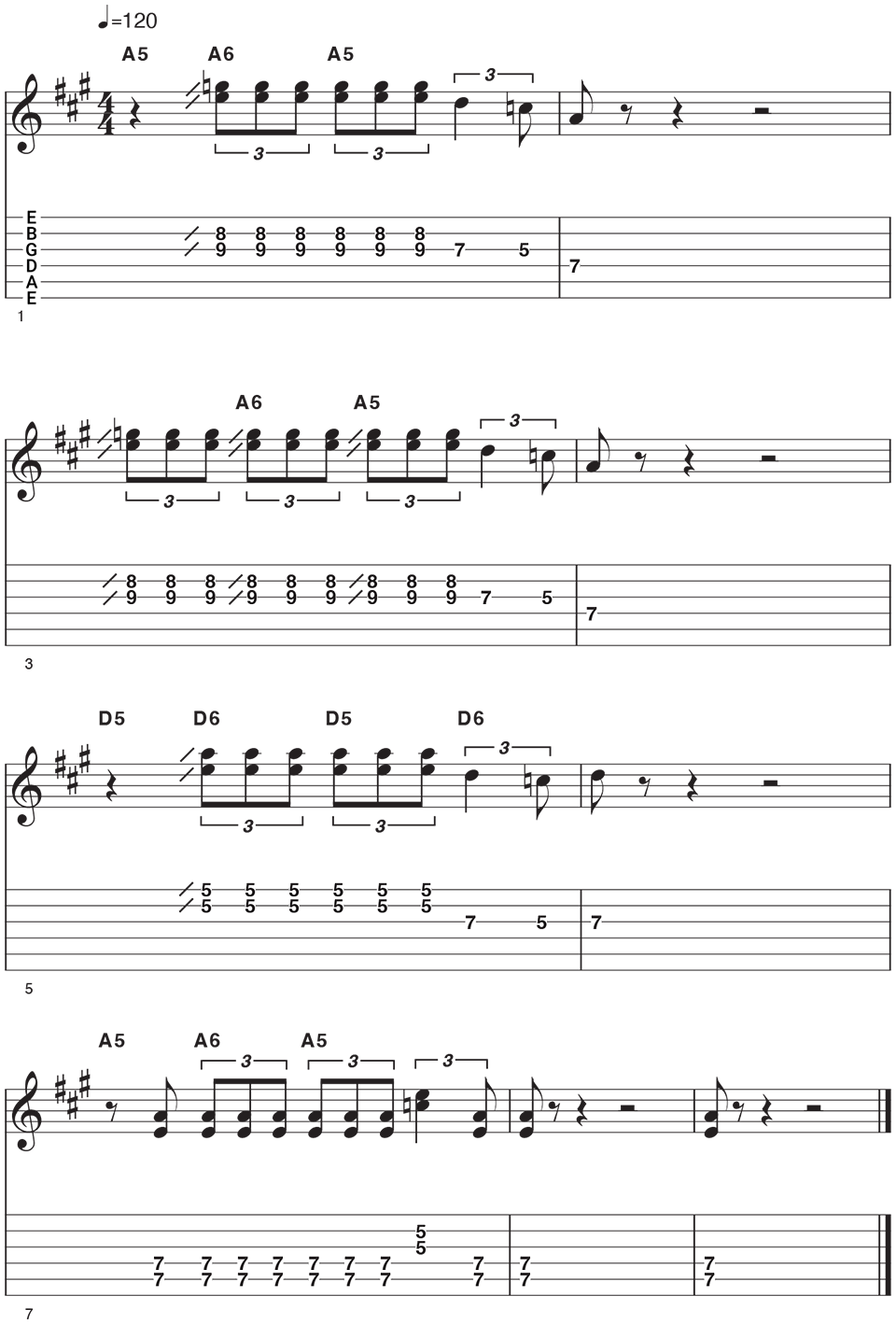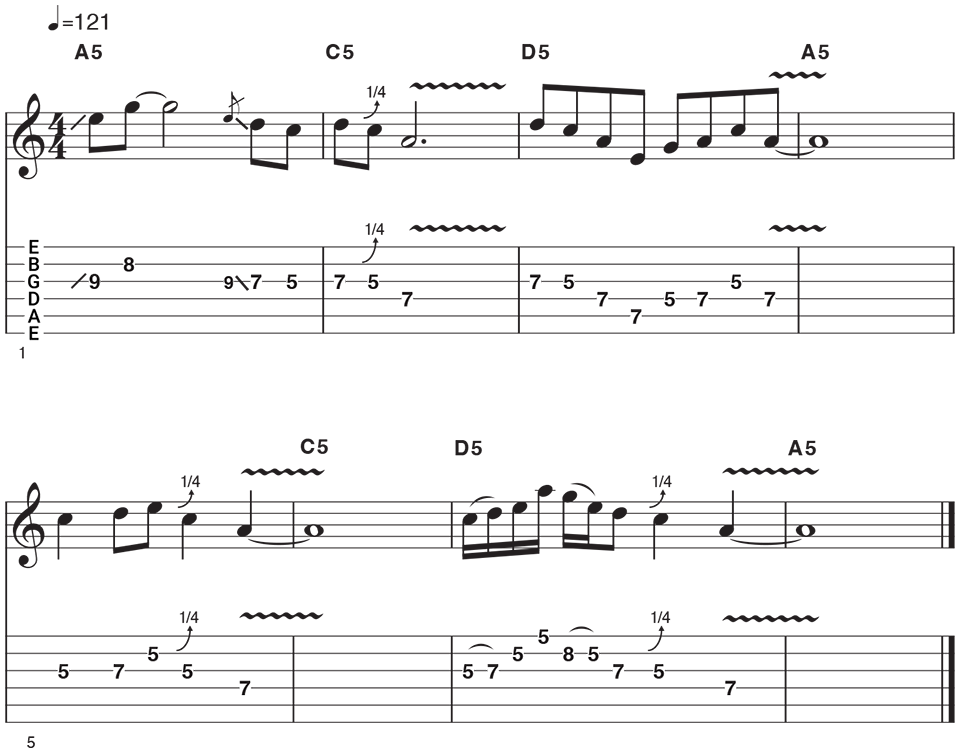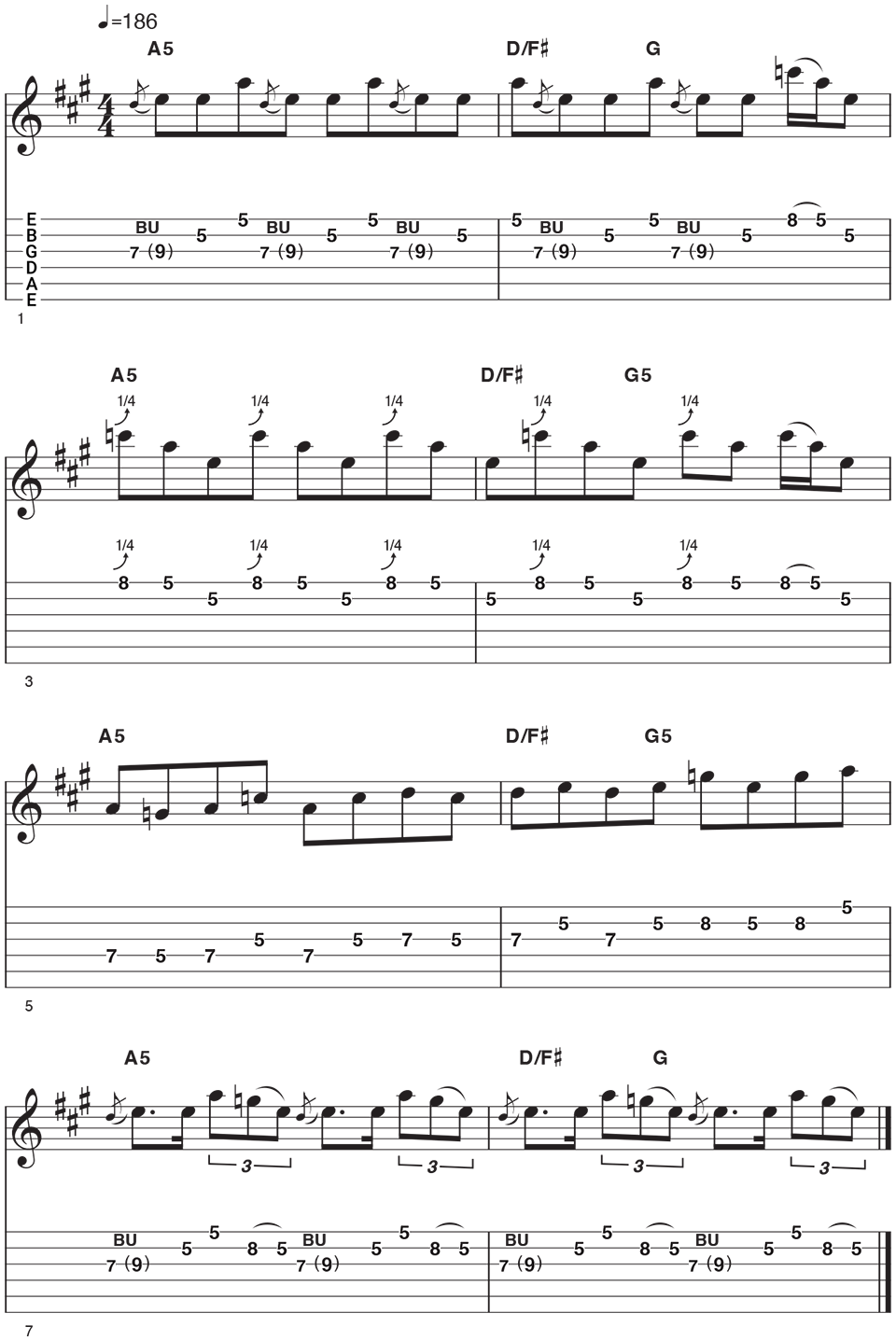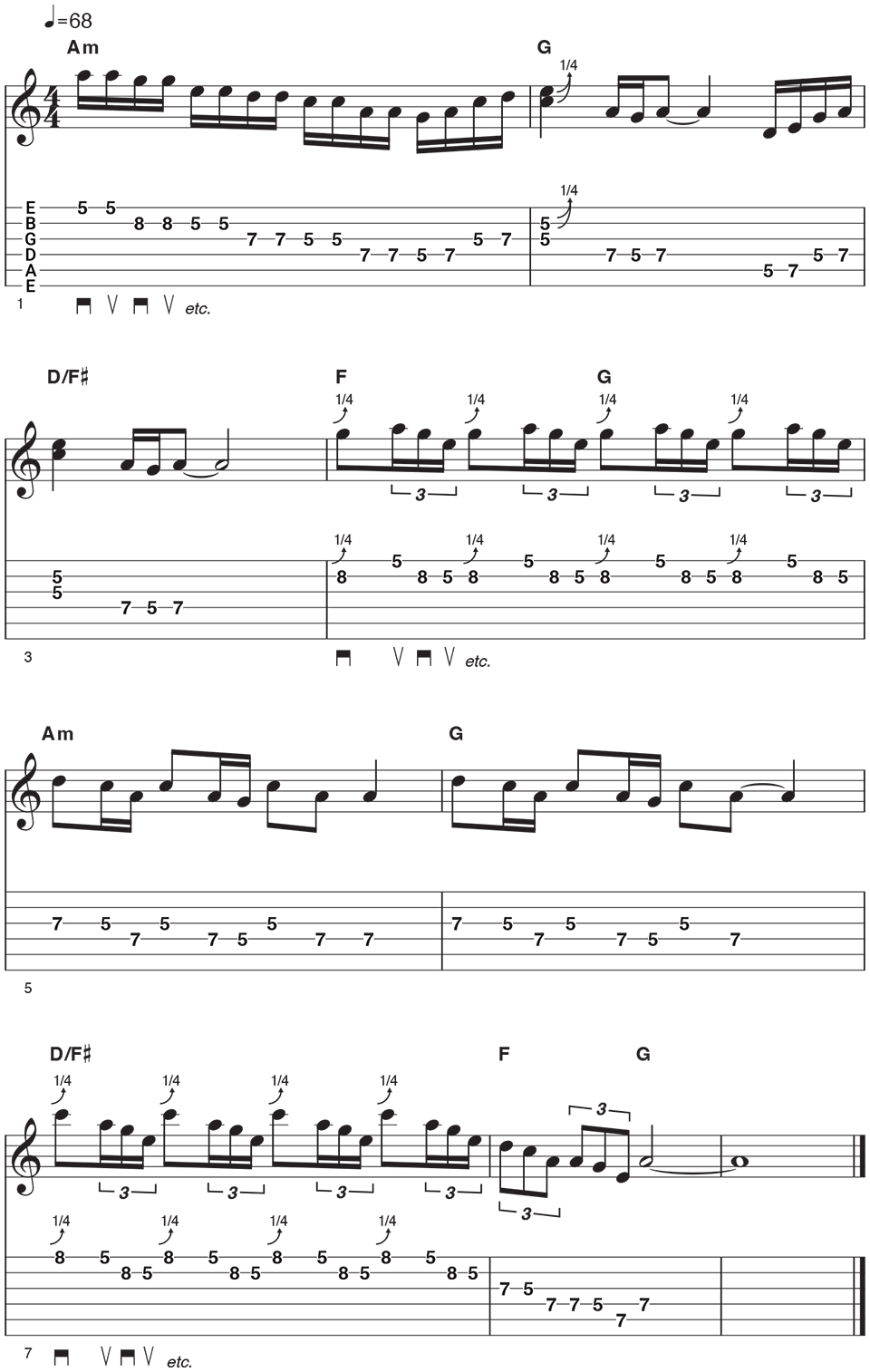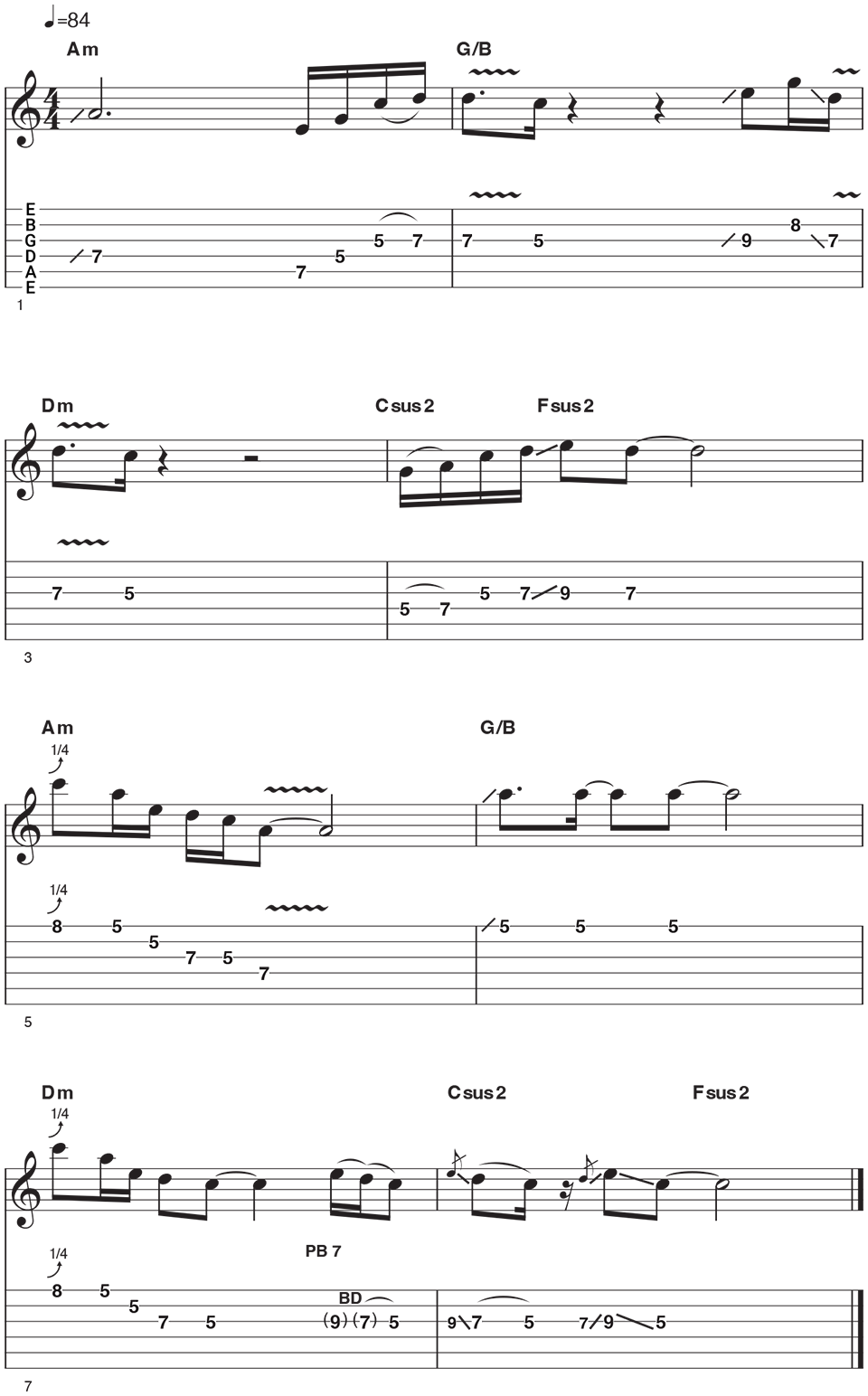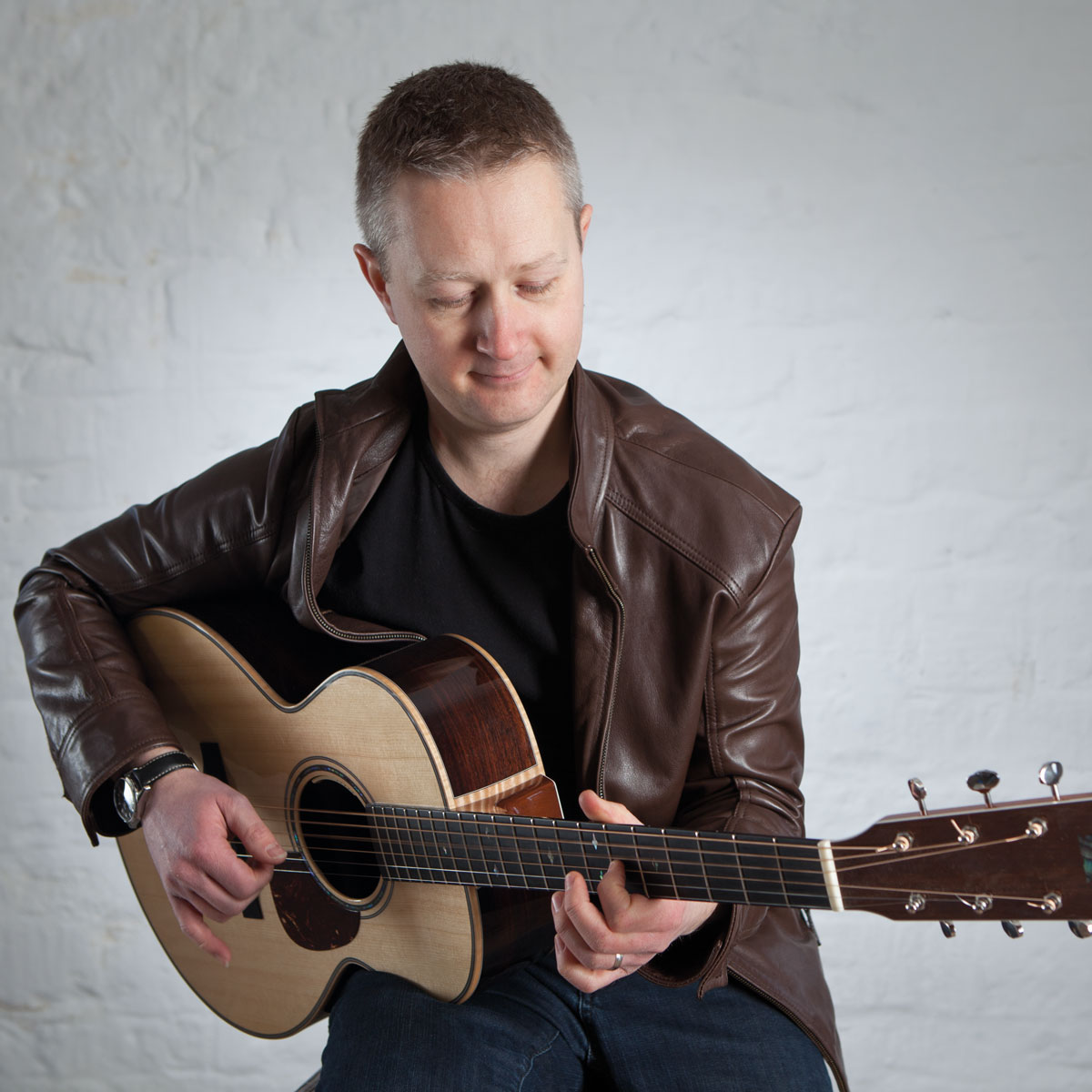From Chuck Berry to Eric Clapton and Slash, every player uses the minor pentatonic – here’s how you can leverage the guitar’s most-used scale in your own playing
Every player is aware of the minor pentatonic, but not everyone knows how to make the most of it. These examples – in the style of some prolific pentatonic players – will help you master the shape everyone uses

It contains just five notes and yet the minor pentatonic scale has been central to countless classic riffs, licks and solos over the decades. The beauty of the scale lies in its simplicity – play an A minor pentatonic scale over an A minor chord and you'll be playing the root note (A), the minor 3rd alternatively named b3 (C), a 4th (D), the 5th (E) and the minor 7th, also named b7 (G). That gives you three strong notes derived directly from the A minor chord (A, C, E) and two colour notes, the 4th (D) and b7 (G).
Below is a fretboard diagram of A minor pentatonic using its most popular shape on the fretboard: there are five different minor pentatonic shapes and this is shape 1.
To the left of the fretboard is '5 fr' – which means the 5th fret – so play this shape at the 5th fret. The black circles with R in them show the root notes of the shape (ie the A notes). All other red circles show the remaining four notes of the scale: b3 = C note, 4 = D note, 5 = E note and b7 = G note.
When you play this scale, use a 'one finger per fret' approach as it's a good habit to develop: first finger plays the 5th fret notes, third finger for the 7th fret notes and fourth finger for the 8th fret notes.

Of course, if you play the A minor pentatonic over other chords the note relationships will change. That said, if you were soloing over a 12 bar styled three chord minor blues (eg Am7 Dm7 Em7) you can't go too far wrong with your note choice.
The fact the shape falls under the fingers easily means it is no surprise that guitarists from all genres are so fond of it. From the blues of B.B. King to the groove metal of Dimebag Darrell, you will find it everywhere.
The real power of this scale lies in the ‘success rate’ of the notes. Most scales contain seven notes and typically two or three of those may not work too well with the underlying chord. You’ll have experienced this if your licks contain sudden unwanted dissonance or just don’t seem to resolve (end) well.
All the latest guitar news, interviews, lessons, reviews, deals and more, direct to your inbox!
When practising, play the minor pentatonic against a minor chord and sit on each note for a while so your ears become accustomed to each note and how it works against the chord. With time and practice, you will develop a good relationship between what chords you are hearing and what you want to play over them.
Now onto six examples that cover the scale and how it's used by five great guitarists: Chuck Berry, Eric Clapton, Jimmy Page, Slash and Chris Buck.
Minor Pentatonic Examples
Example 1. A minor pentatonic scale
The audio for Example 1 features one strummed A minor chord and then the A minor pentatonic scale (shown below) being played ascending and descending against a low A note drone. From this you will learn how the sound of each note sounds against the drone.

Example 2. Chuck Berry’s pentatonic style

The minor pentatonic scale found its original home in blues and then shaped the sound of rock ’n’ roll from the early 1950s onwards. Chuck Berry’s licks were actually inspired from piano players but his use of minor pentatonic double-stop (two notes played together) licks helped define an entire genre.
Here you will learn double-stops, sliding into them and adding a few single notes to end each exclamatory phrase. Notice how the popular shape 1 of the A minor pentatonic that you learnt earlier is now being drawn on in different string combinations to create a performance that is musical and enthused.
Example 3. Eric Clapton’s pentatonic style
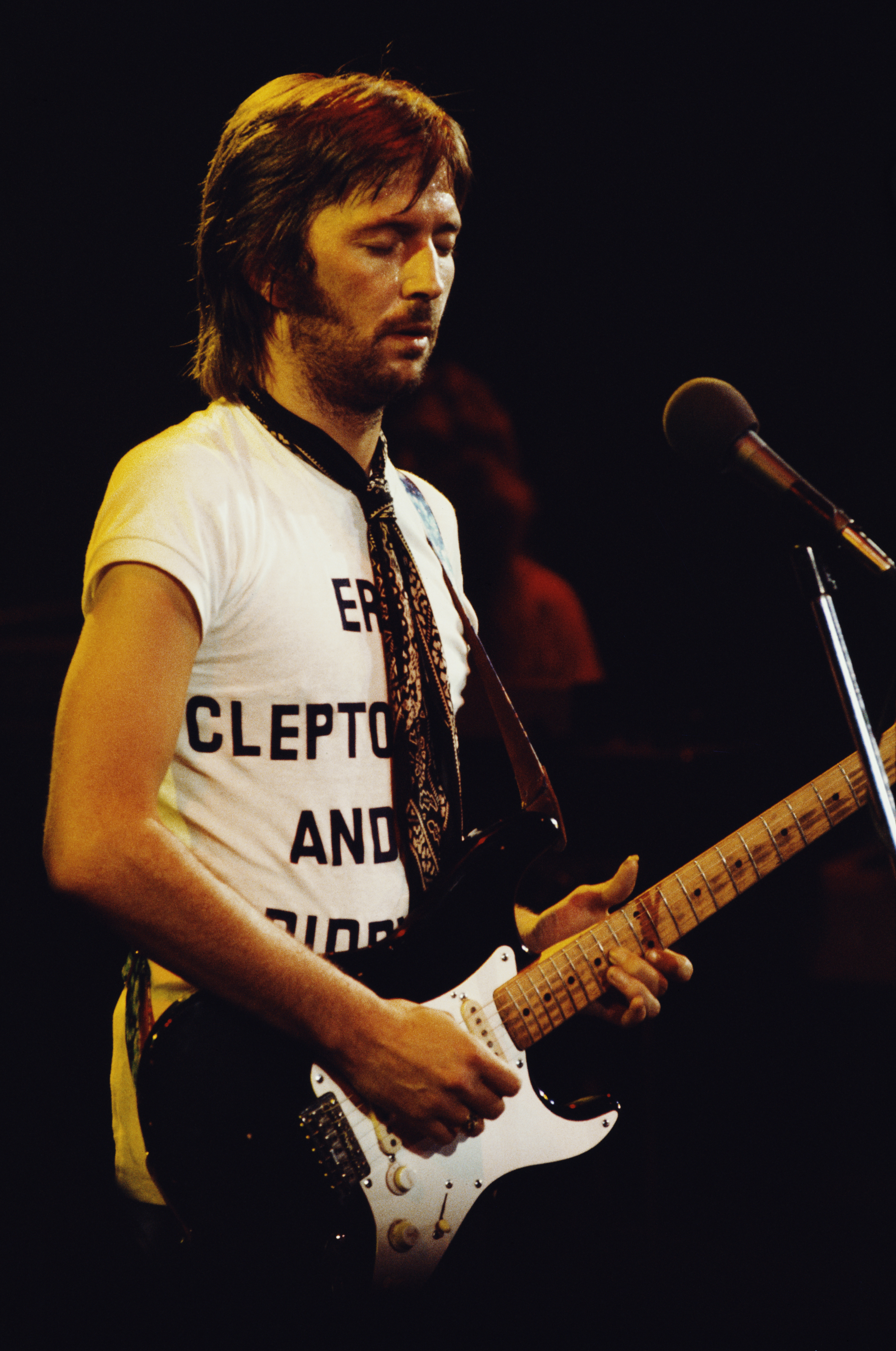
A blues player at heart, there’s also a strong rock element to Clapton’s playing due to his tone and strength of performance. While he has often played with passion and power (e.g. his soloing on Cocaine), he’s also a master at playing slower melodic parts (e.g. Old Love and Wonderful Tonight).
Here you're learning how Eric may create single note lead lines from A minor pentatonic, enhancing them with blues curls (small string bends) and finger vibrato added to the A root note to provide color while it sustains.
Example 4. Jimmy Page’s pentatonic style
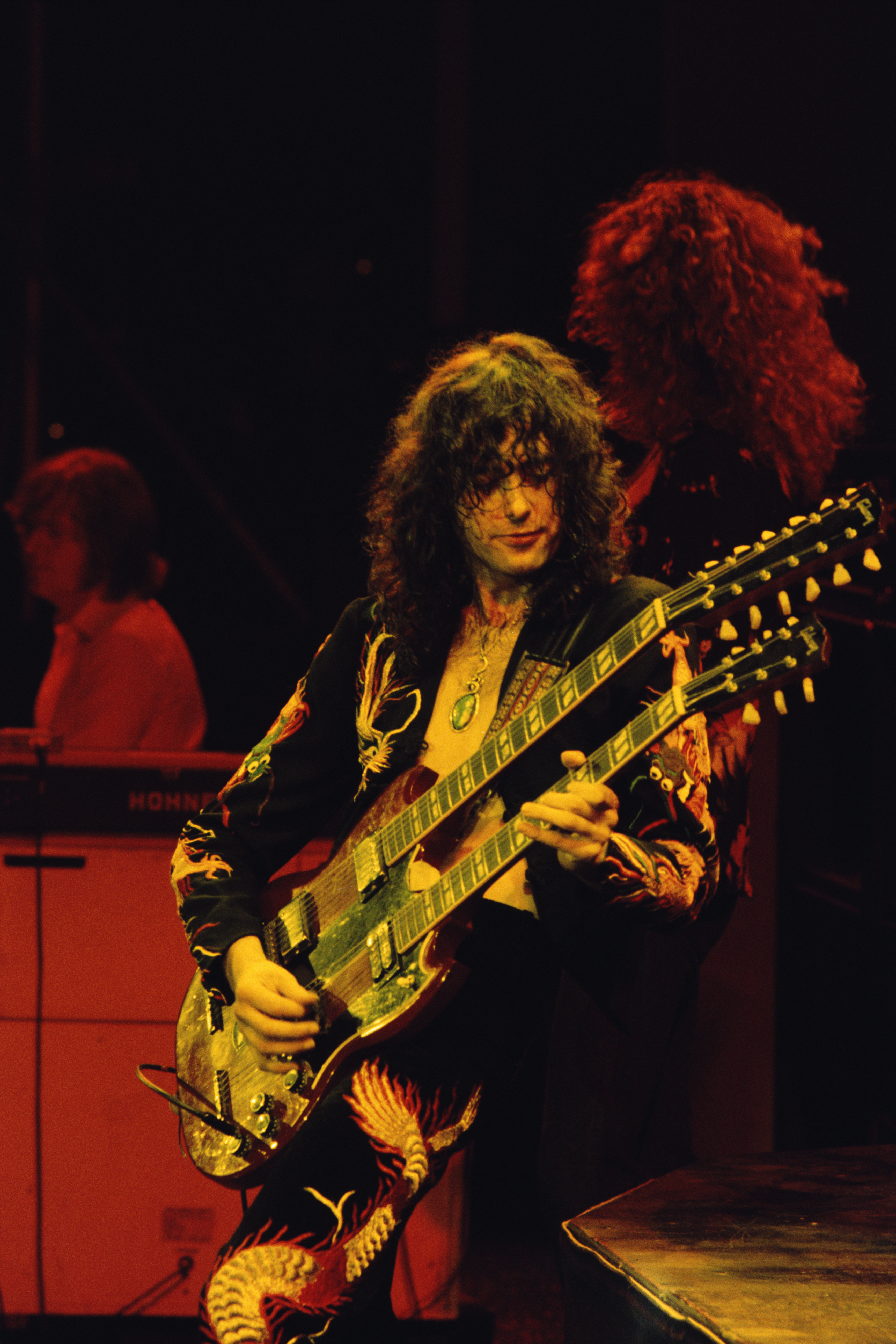
By the late 1960s the minor pentatonic had moved beyond blues to shape the nascent sound of rock. Jimmy Page’s whirlwind approach to soloing can be hard to replicate but there are elements that are great to work on even if you're starting out.
In this example solo, you'll see his use of repetitive string bends (à la) Chuck Berry and blues curl bends that evoke early blues players. In addition, you will play the scale in longer ascending phrases (see bar 5 and 6) and how to add a little flash with speedy triplets (3 note groupings) using pull-offs (see bars 7 and 8).
Example 5. Slash’s pentatonic style
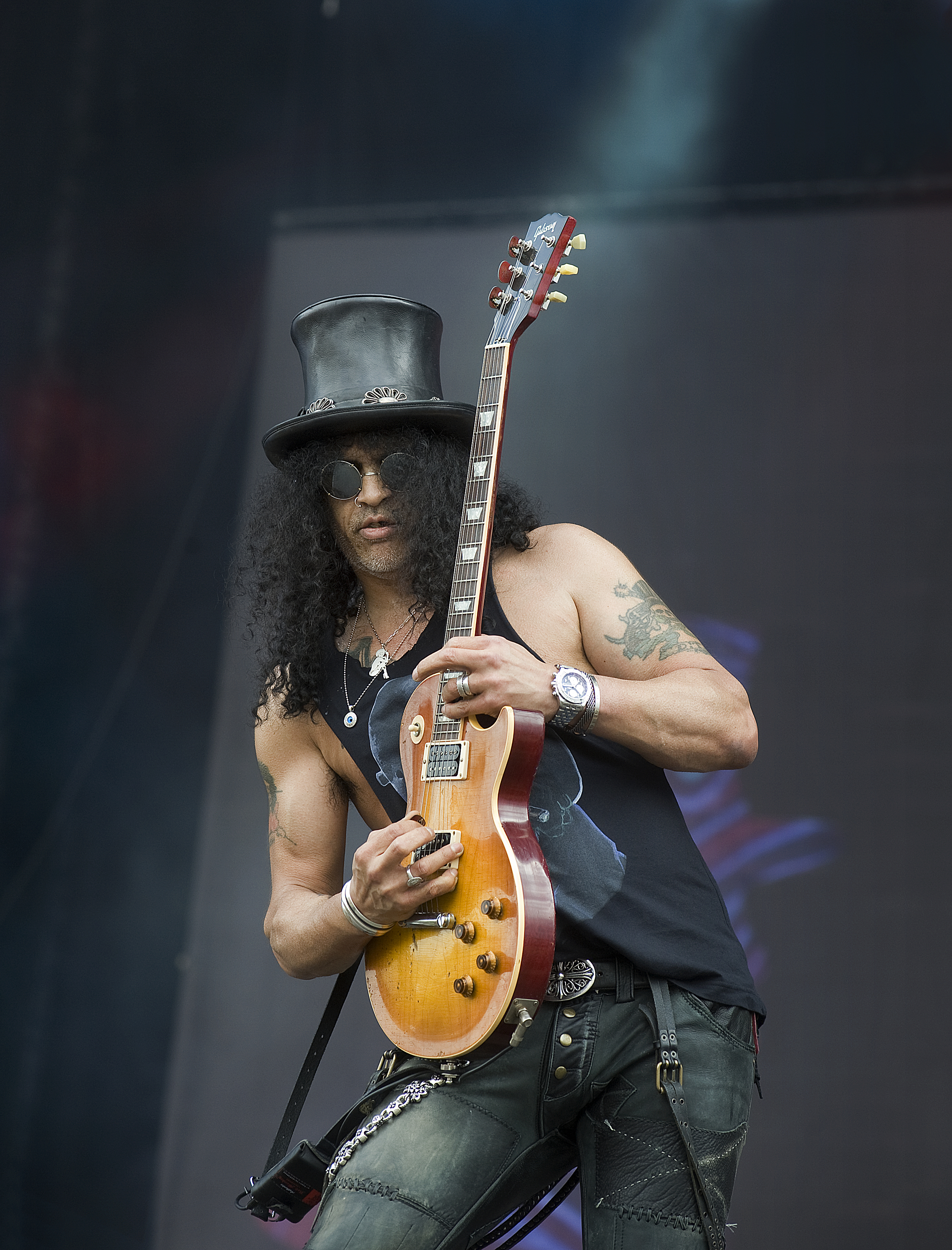
While Slash often dips into more exotic sounding scales – e.g. the use of the harmonic minor during his solo in Guns N' Roses hit song, Sweet Child O’ Mine – the minor pentatonic remains at the core of his playing. His melodic approach to the scale is another factor that sets him apart.
This short A minor pentatonic solo explores his GN'R and Velvet Revolver ballad playing with double picking of notes using alternate picking (bar 1), doublestop bending (bar 2) and speedy triplet based segments (see bars 4 and 7).
Example 6. Chris Buck’s pentatonic style

Minor pentatonic licks have been popular for around 80 years now, but modern players are still finding new ideas and approaches within the style. Young blues rock pioneer Chris Buck uses the minor pentatonic scale to create long, emotive lines that bristle with technique but always remain controlled with impeccable phrasing and melody.
Here, you will appreciate effective ways to balance A minor pentatonic sustained notes using finger vibrato with short bursts of ascending and descending notes which add excitement within phrases.
More guitar legends, more minor pentatonics
Free – Wishing Well
It goes without saying that Free guitarist Paul Kossoff was a minor pentatonic master and his solos are essential learning. For Wishing Well, the main riff is a masterclass in minor pentatonic riffing as Kossoff literally plays a descending E minor pentatonic (E G A B D) scale to create the song’s signature riff.
John Mayer – Belief
John Mayer’s solo in Belief is a great example of how to create a melodic solo using just the D minor pentatonic (D F G A C). Whilst some players sound like they are on autopilot when using the scale, here Mayer plays a considered, memorable solo playing over more than just a basic I – IV – V chord sequence. Notice his use of sliding into notes, repeating small combinations of notes, stinging finger vibrato and quick hammer-ons and pull-offs.
Ozzy Osbourne – No More Tears
The minor pentatonic can be used to create monster rock licks. In his solo for Ozzy Osbourne's No More Tears, Zakk Wylde closes with an astonishing sequence that ascends through the various minor pentatonic shapes using the first and second strings. Powerful and melodic, this one is a great example of building tension and release through the scale.
Mr. Big – Colorado Bulldog
This may well be the most intense and technically difficult minor pentatonic passage ever recorded. For sure, it is stunning to hear and see.
Mr. Big's guitarist, Paul Gilbert – along with bassist Billy Sheehan – starts the song with a blisteringly fast ascending and descending series of notes that are from E minor pentatonic (E G A B D). This scale is arranged as 3 notes per string (not 2 notes per string as is more typical with pentatonics), which requires big fretting hand stretches. Using fast sextuplets (6 notes per beat) and arranged in sets of two strings, Paul's stunning playing is a product of a lot of practice. Indeed, this intro is derived from a warm-up exercise that was then added to for this song.
Stuart Ryan is best known for his acoustic guitar playing, from Celtic fingerpicking and traditional folk to modern percussive phrasing and fresh interpretations of popular pieces. He has released several solo albums, written pieces for UK examination boards and created nine tutorial books ranging from acoustic guitar arrangements to Americana styles.
- Jason SidwellTuition Editor – GuitarWorld.com, GuitarPlayer and MusicRadar.com
You must confirm your public display name before commenting
Please logout and then login again, you will then be prompted to enter your display name.
